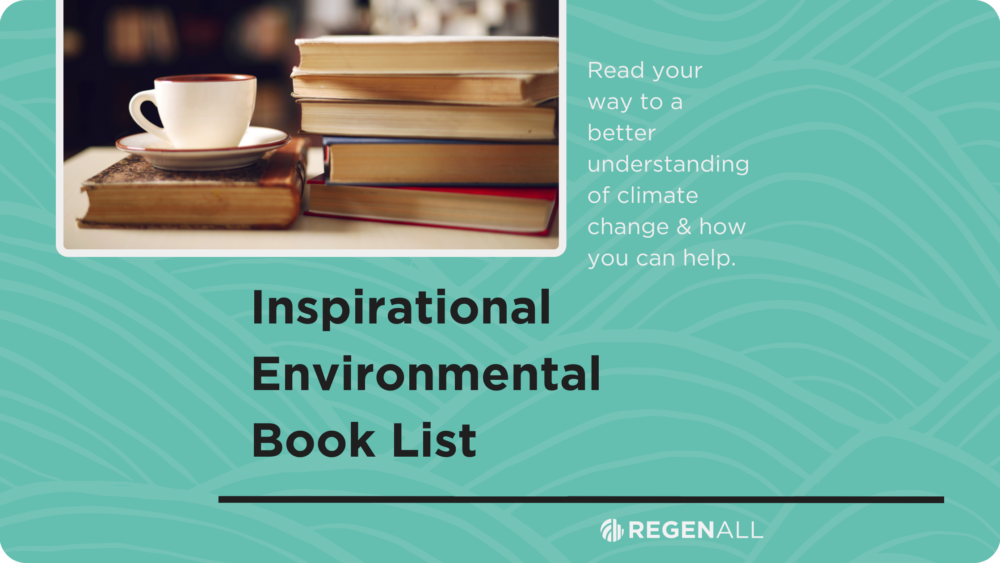It’s the perfect time of year to curl up under a blanket with a warm drink and a good book. Even better when that book brings you a little hope, joy, and opportunity to reduce your carbon footprint and be a better steward of the environment.
If you are looking to add some environmental education to your February to-be-read pile, here are some places to start:
Investing for the Environment
We’ll kick it off with a book by a local author. Rachel Curry is a journalist and finance writer based out of Lancaster. Her book Investing for the Environment, is available for purchase on her website at www.writingsofrachel.com. This one’s a quick read—only thirty pages, but it contains valuable information, especially for readers who may be less experienced with investing.
Curry makes the argument for investing in companies and funds that reflect your values and explains how to leverage your power as a stockholder to effect change in the companies you are bought into. She takes the time to demystify the jargon of the stock market and even shares some funds that neophyte environmental investors might consider starting with. The tone of the book is informal, almost blog-like, as Rachel uses bulleted lists, links, and even emojis to get her point across. Read all the way to the end for a cameo from RegenAll.
Drawdown
If you’re not familiar with Drawdown, this needs to be on your reading list. It contains the research of Project Drawdown, an extensive research project investigating the practicality and potential of dozens of environmental solutions, from composting to green architecture to plant-based diets. The data is presented in a compact, easy-to-understand way, along with plain-language explanations for each of the climate solutions presented and colorful photography. Project Drawdown’s findings have been a major source of inspiration for RegenAll’s work.
The Intersectional Environmentalist
I discovered this title through a citation in Investing for the Environment, but it examines environmentalism through an entirely different lens: that of social justice and intersectionality. Author Leah Thomas is a writer and activist and the founder of the nonprofit Intersectional Environmentalist.
The book begins with an explanation of intersectionality as it was originally used, as a way to describe the way that race and gender intersected to present black women with unique challenges. From there, she explores how racial justice and environmental justice intersect. The book takes a look at the environmental racism (such as the higher impact of rising temperatures or pollution in majority-black communities in the US and historically colonized countries worldwide) that environmentalists sometimes ignore. It also celebrates some of the activists of color who are engaged with the modern environmentalist movement.
The Future We Choose
This short book outlines two possible futures. In one, climate change is the impetus that forces humanity to change for the better, developing efficient, earth-friendly systems that ultimately make the world a better place to live in. In the other, climate change is left unchecked, and pollution, drought, and rising temperatures make the world increasingly less hospitable.
Its authors, Christiana Figueres and Tom Rivett-Carnac, helped to negotiate the Paris Agreement. The book is part environmental policy, part science fiction-esque thought experimentation. It is a helpful book for anyone who is struggling to envision the future—for better or for worse.
The myth that thinking, learning, and taking action on climate change has to be overwhelming and sad is debunked in these environmental books. There’s a lot to learn, but that leaves room for meaningful growth and positive changes for everyone. Take the next step on your climate-action journey with one – or all – of these climate-friendly reads.
This article was written by a guest contributor and supporter of RegenAll who wishes to remain anonymous. We thank them for their work.



Comments are closed.